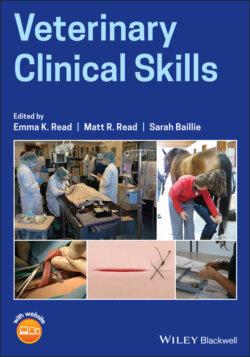Читать книгу Veterinary Clinical Skills - Группа авторов - Страница 36
Step 6: Evaluation
ОглавлениеThe final step in the curricular design process is evaluation. This is a process of determining the merit, value, or worth of a program that has been implemented (Kern et al., 2016). Although evaluation is often considered to be the final phase of curriculum development, it should span the entire process and is often cyclical and iterative. Furthermore, evaluation of a curriculum should be conducted early on, or at key points, in order to inform changes and identify opportunities for improvement. Alternatively, evaluations can be made after full implementation to determine whether a curriculum was successful, and for whom, in order to report back to stakeholders (Schneiderhan et al., 2018).
The major steps of a curricular evaluation involve five components, which will be discussed briefly below.
1: Develop a clear plan to use evaluation results
Although it may seem counterintuitive, the first step of an evaluation is to consider who will use the evaluation results and how they will be used. An evaluation that is never used will not be worth the effort (Schneiderhan et al., 2018). A utilization plan should include a dissemination plan (e.g. written reports, presentations, discussion sessions) and the specific audience for each. In addition, the utilization plan should detail what types of actions may be anticipated based on the results; for example, could the report lead to changing, ending, or expanding the clinical skills program?
2: Determine how to measure objectives
The next step is to determine how to measure the outcomes of the learning objectives for the curricular initiatives and whether these were met by the students. This step mostly incorporates assessment and includes consideration of the different assessment strategies that are most appropriate to assess student learning of clinical skills, as well as the timing of these assessments, whether they will be repeated, and what ultimately demonstrates proficiency for more complex clinical activities that incorporate multiple competencies and skills.
3 & 4: Collect and analyze data
Data collection might involve tests, interviews with students or instructors, performance assessments, or other methods (Schneiderhan et al., 2018). Analyzing pre‐post differences can be particularly helpful in assessing whether learning has been enhanced (or otherwise) due to curricular changes.
5: Use evaluation results by applying lessons learnt
The final step is to use the evaluation results and apply lessons learnt to the curriculum (Kern et al., 2016). Guided by the utilization plan, this step consists of disseminating information to relevant stakeholders and making use of the results to improve learning outcomes or the learning experience. This evaluation process should also be iterative as educators apply lessons learnt and then subsequently evaluate and implement further improvements to the curriculum.
